Saturday, 28 May 2022
I know I’ve gotten used to my routine when a Saturday rolls around and it’s time to wash clothes and clean house. It got me to thinking how much wash day has changed through the years. I’ve probably waxed poetic about this before but it’s on my mind, so here goes.
Saturday in the south was always wash day – at least with my grandparents on both sides of the family. Never on Sunday! That was a sin! Most important in my mind was when I would visit Grandma Searcy in Pulaski, Mississippi (named after Count Casimir Von Pulaski of revolutionary war fame). You would think grandmothers would put everything on hold on a Saturday when grandkids came around but chores in the country never stopped.
Grandmother Searcy boiled her clothes in a cast iron pot. First, she had to build a fire (think summertime heat here) and then she would pour in well water (that she had to draw from the well on the other side of the house) about half way up the pot and add lye soap shavings. Clothes needed to be washed would be immersed in the pot and she would agitate the clothes with a boat oar.
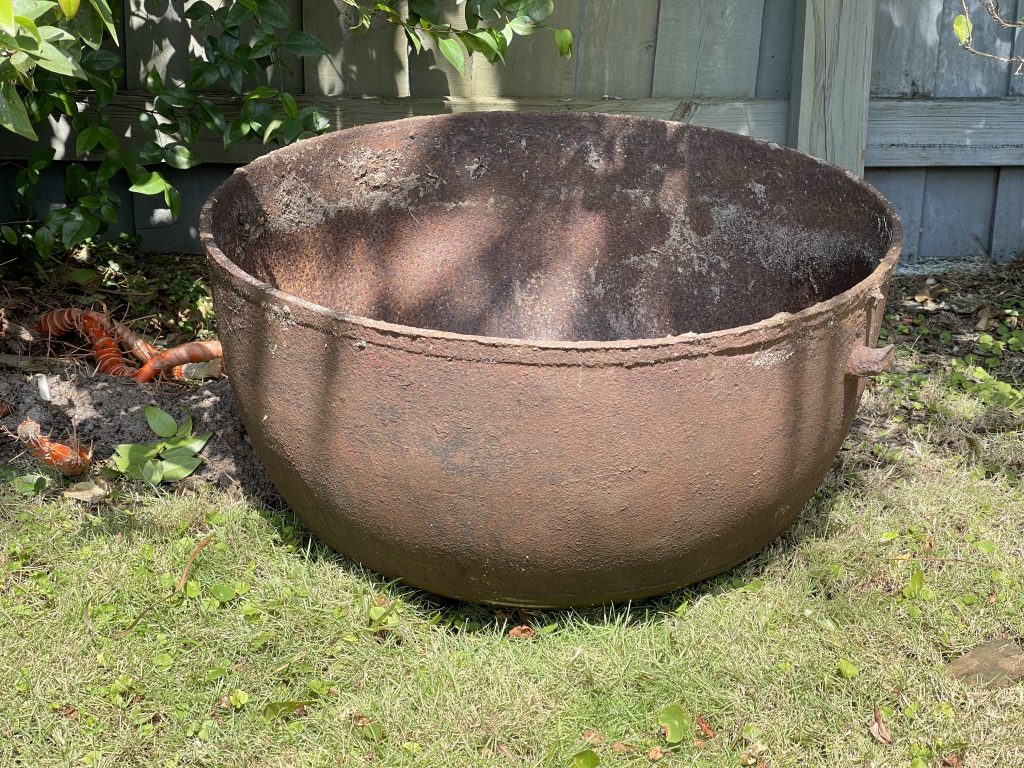
Once she was satisfied the soap had done its job, she then used the oar to pull the clothes out one by one and spread them on a clothes line to cool off. While waiting for them to cool, she turned over the pot with the oar, rinsed it out with well water, flipped the pot back upright over the fire, stoked the fire, and added well water up to the half way point and got it boiling. Back in went the clothes and she stirred them around until she was satisfied most of the soap was out of the clothes.
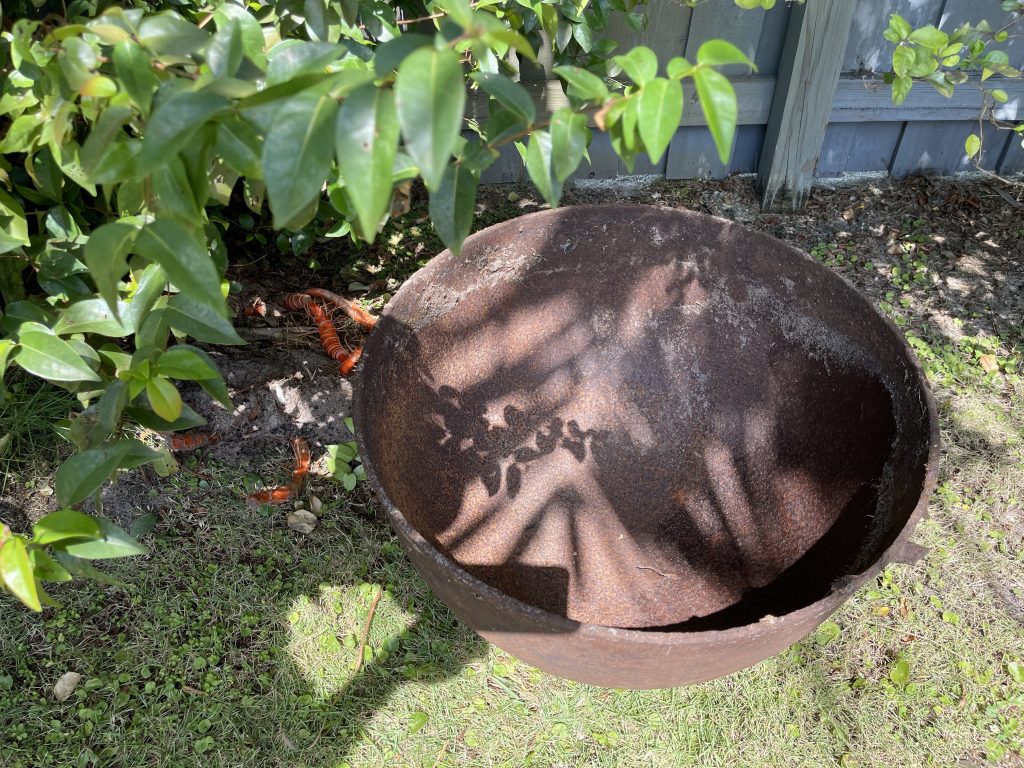
Back to the clothesline with the boiling hot clothes until they cooled enough until she could rinse them. She used an old scrub board to finish rinsing the clothes, wrung them out and then put the back out on the clothes line for drying. I actually have a wash tub and scrub board here in the garage. I keep it on hand for emergency purposes.
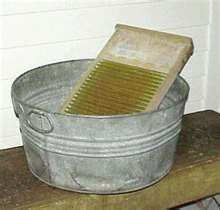
I was always thrilled when I got old enough to help her wash. I became the agitator with the boat oar. She constantly chastised me that I was “going to fast” or “stir harder” or “quick spilling the water out of the pot.” Later, when I got even older, she would let me do the final rinse on the scrub board and then she would wring them out for me. She must have had a great set of arm muscles to wring out blue jeans and overalls.
As you might guess, this was good for everyday wear like dresses, overalls, jeans, every day shirts, socks and underwear. So what do you do when it is you Sunday-go-to-meeting clothes.
She once told me before automobiles were very common, she would ride into Morton (7 miles away) on a horse and buy a bottle of acetone from the pharmacist. Acetone was the original “dry” cleaner. You’ll be hard pressed to find acetone these days because it is a carcinogen. In essence, wash day in the country on a Saturday was pretty much an all day affair. It took her most of the day to ride into town and back on that horse.
She still ironed her clothes and she had the old flat irons that you heated on a stove or in a fireplace.
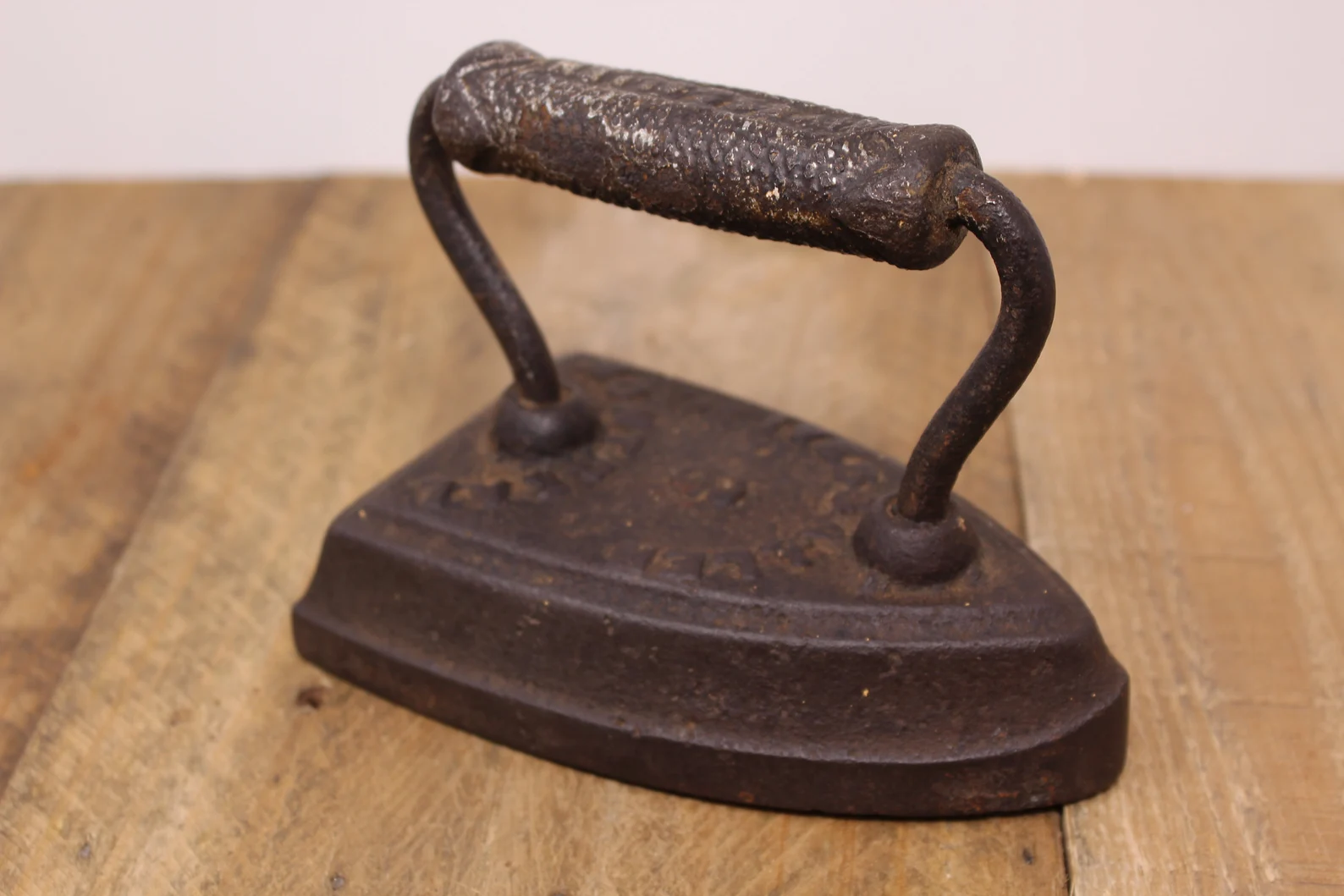
She had three or four of these around the house. Once heated, you would iron clothes until it began to cool and then you would put it back on the stove or facing an outdoor fire and pick up another hot one. Sadly, I don’t have any of her old irons.
Mother actually used these when I was a kid. If her electric iron died (they often did back then) she’d put this on the electric eye of a stove to heat it up. You could stand it on it’s end like a regular iron, but a lot of people had a “holder” that you sat on the ironing board so it would lay flat. The reason you’d do this instead of stand it on its end was if you knocked the ironing board, the damn thing would fall off and smash your toes.
A step up in my clothes washing education was the old wringer type washer.
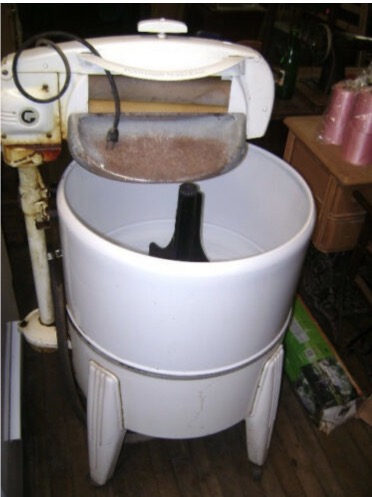
This machine is dangerous! It’ll crush your fingers if you are not careful. You plugged it in, raised the drain hose and clipped it off and filled it by hand with water. Then you added your soap of choice and turned on the agitator. If the clothes were exceptionally dirty (think kids in blue jeans) you lowered the hose, unclamped it, drained the water, and then repeat.
After you decided clothes were clean, you drained the soapy water and filled the tub with rinse water and let that agitate a while. You may have to do that two or three times. When you were ready, you then started the wringer. There were two rollers and you could adjust the roller separation by the twist you see at the top of the machine. You fed the clothes up the tray and into the wringer which got rid of the water. There was a handle (usually on the right side) that allowed you to stop, start, or reverse the direction of the rollers. You could then wring the clothes one way and then have it come back through for an additional wringing. The trick was to keep your fingers out of the rollers. After my first pinching experience, I got pretty good at keeping my fingers protected. By the way, the button industry was very busy during this period because the wringer crushed them like crazy.
My Aunt Sue on my Dad’s side had this type of machine and so did my Aunt Mabel on my Mother’s side. As you can see by the picture, these machines were pretty much indestructible. One thing you had to worry about when the agitator was going was the machine had a tendency to “walk” across a room. When I was at Aunt Sue’s I was constantly dragging the machine back into position. I think I remember the one at Aunt Mabel’s was a little more lively in its dance across the floor.
When I first became a counselor at Camp Kickapoo near Clinton, Mississippi, the only washer they had available for camp staff was the old wringer type. Since most of my fellow counselors were from wealthy homes in Jackson, they never washed clothes at camp. I was probably the only one who knew how to use it and I did every Saturday afternoon after all the kids had left for the week.
My first truly “modern” washing machine was at my Grandmother Ruby’s. It had the agitator inside the tank and the process was pretty much fully automated. If I remember correctly, you didn’t set the machine for delicates or anything type of setting, you just set the time for the wash. This one was hooked up to both hot and cold water taps.
Later, the washing machine industry started making the gears of the agitator out of plastic and they would wear out over time. I’m pretty sure this was designed to get you to purchase a new machine because most appliance repair stores wouldn’t even consider trying to find replacement parts.
My latest washing machine (I don’t like it) doesn’t have an agitator. It simply has a set of four bumps at the bottom of the tank. The water level is automatically set on low unless you tell it “deep wash” (which I do.). It also takes approximately 43 minutes to wash a single load. My old machines could do a wash in 20-25 minutes. I’m not sure the new machines are an evolutionary advancement over the older models with the large agitator in the tub.
Up until a few years ago, I still ironed clothes. I was a little anal about handkerchiefs. I still iron my blue jeans. I can curse Mother for that.
Mother, the few times she decided to be a homemaker, would starch and stretch my and Archie’s blue jeans. The starch was a powder that you mixed with water – probably Argo starch. You would dip the clean wet jeans in the starch solution, wring them out and then insert stretchers into the legs and hang them out to dry. After they dried, you ironed them.
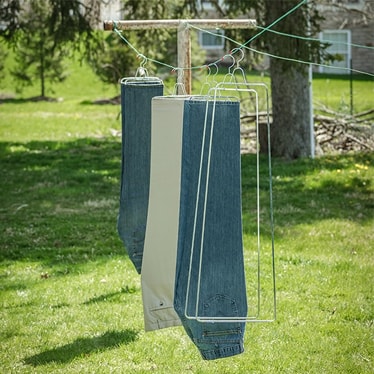
To iron them, you sprinkled them with water using a sprinkler head and an old Coca Cola bottle. The old electric irons didn’t have a steam setting so you had to moisten the clothes before ironing or you’d never get the wrinkles out. It was typical to take any clothes that needed to be ironed, sprinkle them with water, place them in a bag and put them into the vegetable crisper until you were ready to iron them. Sometimes Mother would leave them in the refrigerator for a couple of days until she could get to the ironing.
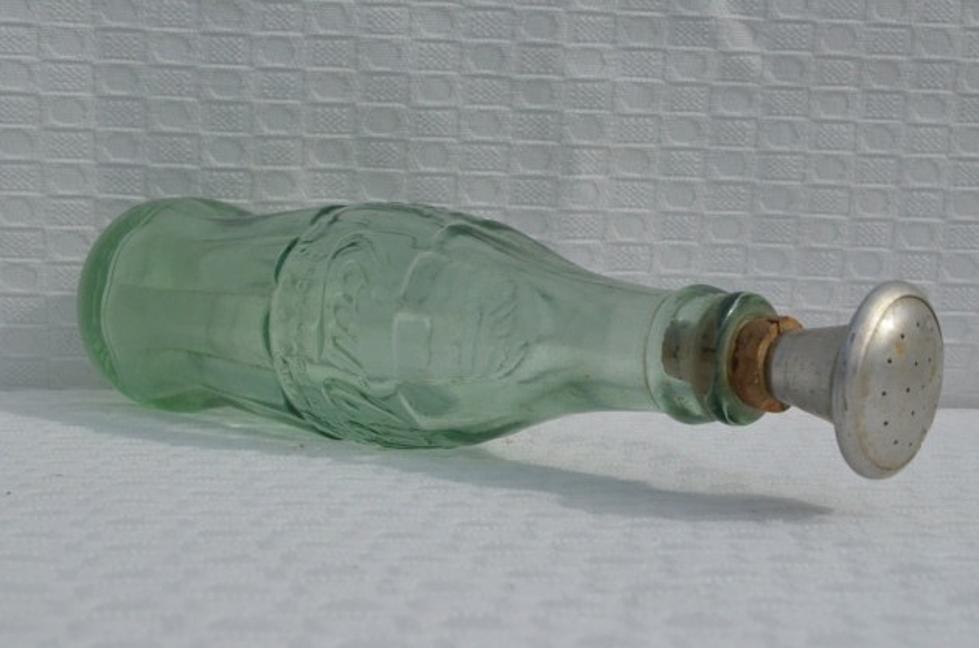
You could cut your finger on the crease put into those ironed, starched jeans. Mother always over did the starch. You could stand those jeans up in a corner and they’d stay that way for days. What was sheer agony was putting your legs into those jeans. You had to pry the layers apart with your feet and then feel the starch scratch away at your legs as you inserted them. The first time you sat down in those jeans, it actually hurt because of all the starch.
Mother truly believed in starch. When my Dad went back into training for Korea, Mother didn’t know any better and starched his underwear. Since they hadn’t been married too long, my Dad held out for a few months and then begged her not to starch the underwear anymore.
If I never see another pair of jeans stretchers again, it’ll be too soon.
Of course, today we have spray starches and irons with steam function. I really don’t mind ironing clothes. It’s somewhat therapeutic. I used to iron all my pants, shirts and handkerchiefs for teaching. Then I discovered the magic of no-iron shirts. Before they went out of business, Brooks Brothers had the best. You took them out of the dryer and hung them up immediately and they were wrinkle free.
When I did iron shirts, I was light on the starch. One Saturday I was apparently in la-la land and I picked up what I thought was the spray starch to iron a shirt. It turned out it was Scrubbing Bubbles. I realized the difference when it foamed up like in the bath tub. Other than my blue jeans, I don’t iron much of anything any more.
Stay tuned!
